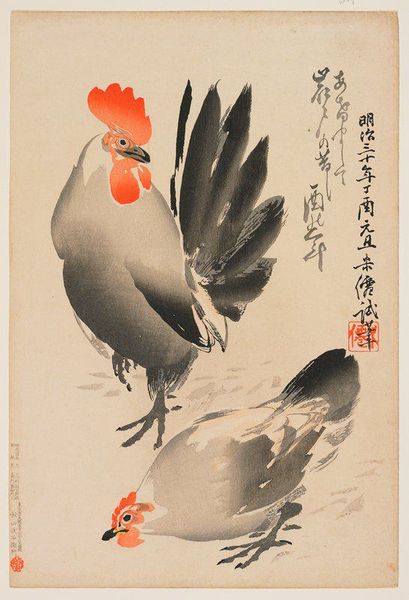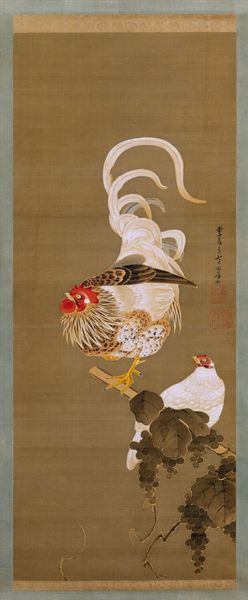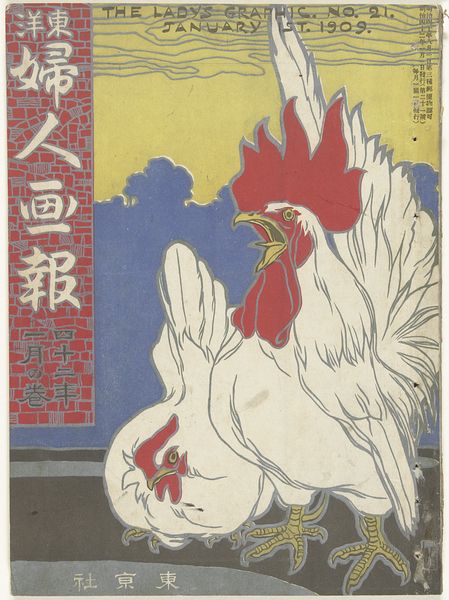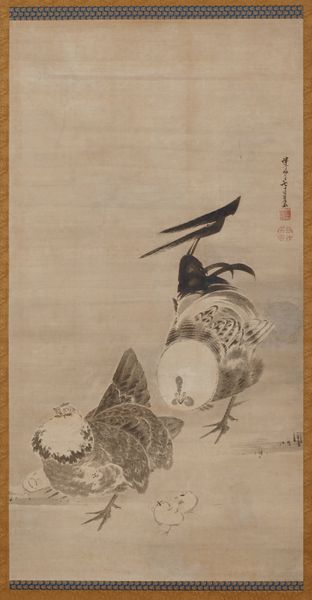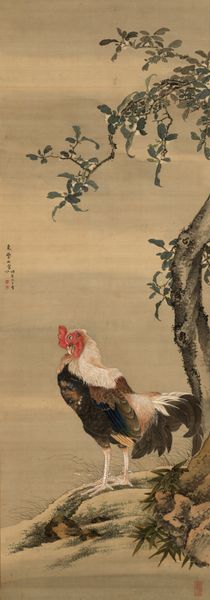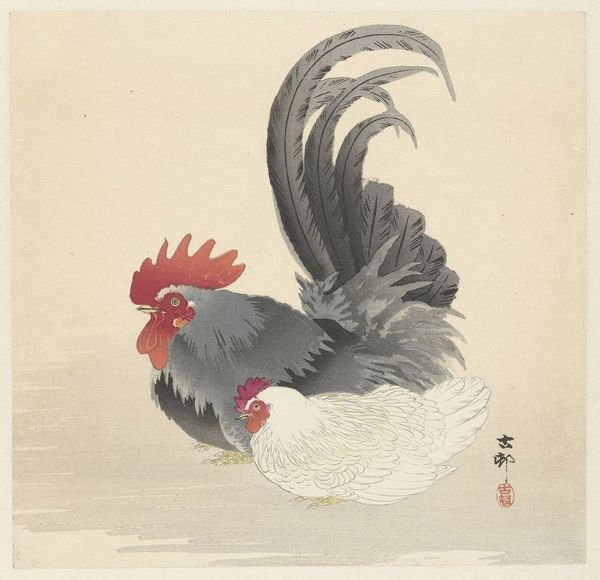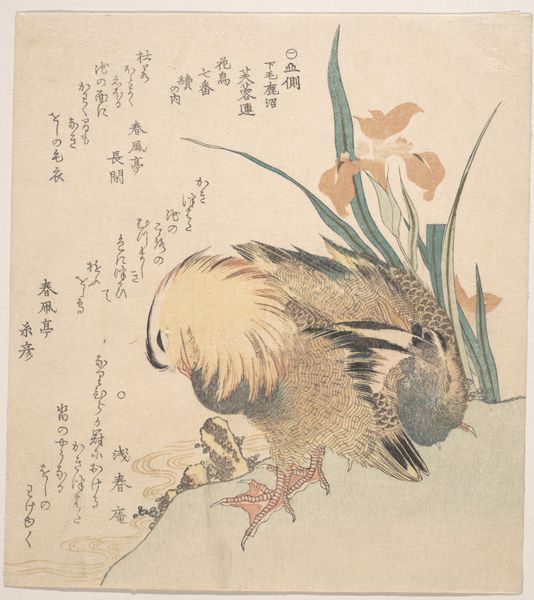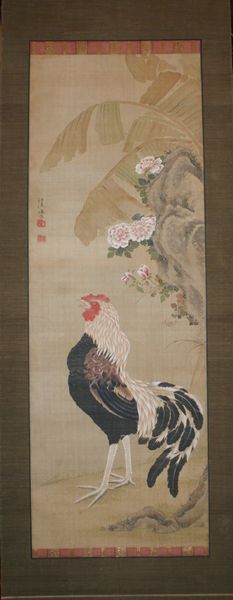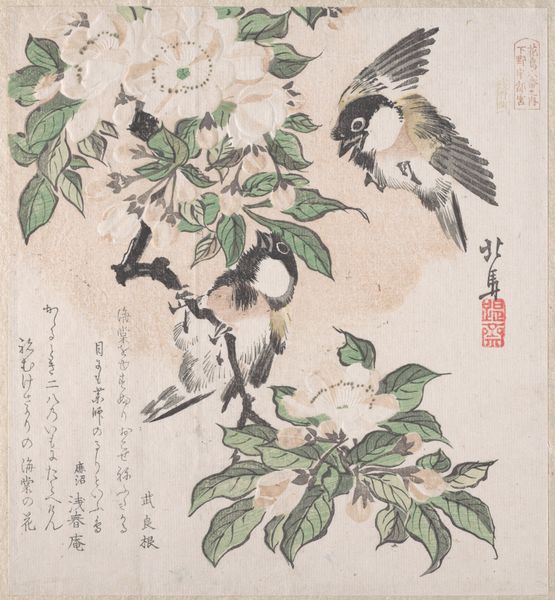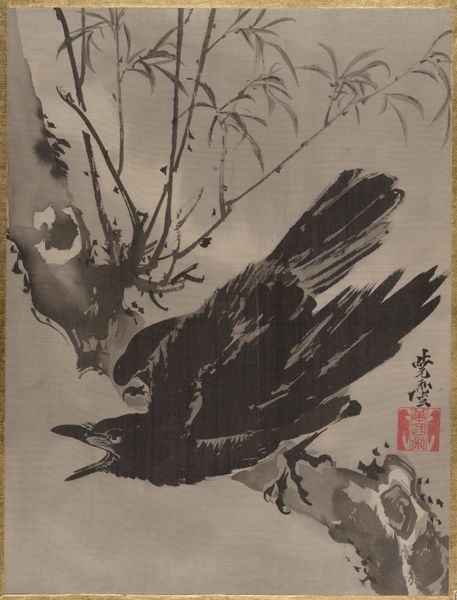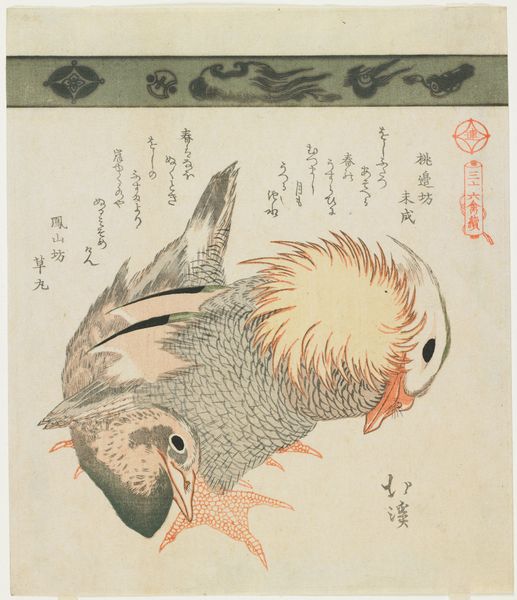
Dimensions: 13 1/2 x 10 7/8 in. (34.3 x 27.6 cm)
Copyright: Public Domain
Editor: Here we have Kawabata Gyokushō's "Cock and Hen," a watercolor painting created sometime between 1887 and 1892. It's currently housed in the Metropolitan Museum of Art. It strikes me as both elegant and slightly humorous. What do you see in this piece? Curator: Elegance and humor—I like that! For me, the first thing that grabs my attention is the pure artistry of the brushstrokes. The artist’s confidence! Each line feels both deliberate and spontaneous, capturing the essence of these birds with remarkable economy. It reminds me of classic ukiyo-e prints but with a modern twist. Do you get that sense of playfulness, that almost winking acknowledgment of tradition? Editor: Definitely! I think that the pairing of the very sleek cock with the fluffy hen makes it kind of funny. The sharp black feathers juxtaposed with the round white plumage is also eye-catching. What about its cultural context – does it tell us anything about Japan at that time? Curator: Absolutely. Remember, this is the Meiji period, a time of rapid modernization and engagement with the West. But simultaneously, there was a resurgence of interest in traditional art forms. So, Gyokushō is both honoring tradition – think of the simplified forms, the focus on capturing the ‘spirit’ of the subject – and pushing boundaries, infusing it with his own personality and perhaps a touch of playful observation. I'm also drawn to their gaze. There’s a directness, an awareness there. Editor: It’s fascinating how much context changes how you view a piece. I really see the balancing act now. Curator: Precisely! It’s not just a pretty picture of chickens. It's a window into a complex cultural moment. It seems like Gyokushō understood his subjects quite well, almost personally.
Comments
No comments
Be the first to comment and join the conversation on the ultimate creative platform.
